Occupational Safety Training in Chocolate Manufacturing
99,000 ₫
Note: The above price is calculated for one person, the price may fluctuate depending on the number of trainees participating in the course and the dynamics of the market. For more accurate price support, please refer to the quotation table or contact our consulting staff directly.
Occupational safety is an important issue in chocolate manufacturing factories and needs to be addressed promptly to ensure the health and safety of workers, as well as to enhance the reputation of businesses. The Occupational safety training course is one of the effective solutions to raise awareness of accident prevention for workers participating in chocolate production.
Table of Contents
Toggle1. Overview of Chocolate
a. What is Chocolate?
- Chocolate is a type of food made from ingredients such as cocoa powder, sugar, and fat. These ingredients are mixed, finely ground, and further processed to create chocolate. Chocolate has a dark brown color, with a bitter, sweet, and aromatic taste. It is widely used as an ingredient in other food products such as cakes, candies, tea, coffee, beverages, etc. Additionally, chocolate is often used as a gift and considered a special and delicious treat for many people.
- The chocolate manufacturing industry in Vietnam is developing with many enterprises participating. According to the General Statistics Office, Vietnam’s chocolate production reached over 170,000 tons in 2019, growing 13% compared to the previous year. Among these, dark chocolate accounted for a large proportion and showed growth of 14% compared to 2018, while white chocolate and milk chocolate grew more slowly.
- Recently, the chocolate manufacturing industry in Vietnam has also focused on food safety standards and product quality to meet consumer requirements and export standards.

b. Types of Chocolate Manufacturing Machinery
The common machinery and equipment used in chocolate manufacturing include:
- Cocoa grinder: used to grind cocoa into cocoa powder.
- Chocolate mixer: used to mix ingredients such as cocoa powder, sugar, and milk to create a chocolate blend.
- Chocolate beater: used to whisk chocolate, creating a smooth and creamy texture.
- Chocolate molding machine: used to mold and shape chocolate.
- Chocolate packaging machine: used to package chocolate products into boxes, bags, or pouches.
- Chocolate ice cream machine: used to make chocolate ice cream.
These machines are used throughout the chocolate manufacturing process, from ingredient preparation to final product packaging.

c. Chocolate Manufacturing Companies in Vietnam
In Vietnam, there are many chocolate manufacturing companies with varying scales and product quality. Some notable companies include:
- Tan Hiep Phat: Besides beverage manufacturing, Tan Hiep Phat produces packaged chocolate, chocolate bars, chocolate biscuits, chocolate ice cream, etc., under the Number 1 brand.
- Kinh Do: One of the leading companies in confectionery and chocolate manufacturing in Vietnam, producing premium chocolate in diverse flavors and designs.
- Nestlé: A multinational corporation headquartered in Switzerland, operating in the food and beverage sector. In Vietnam, Nestlé produces famous chocolate products such as Kitkat and Milo.
- Mars: A multinational corporation headquartered in the United States, specializing in food and beverage products. In Vietnam, Mars manufactures and sells chocolates like Snickers and Twix.
- Bibica: A leading confectionery and chocolate manufacturer in Vietnam, offering a wide range of chocolate products, including packaged chocolate, chocolate bars, and soft chocolate, under well-known brands familiar to Vietnamese consumers.
d. Specific Jobs in a Chocolate Factory
Group 1
- CEO, Deputy CEO, Department Heads in a chocolate factory.
Group 2
- Safety Officer: managing safety in the factory, designing safety procedures, supervising and ensuring employees comply with safe work processes.
Group 3
- Ingredient preparation: preparing necessary ingredients for chocolate manufacturing, including pure chocolate, cocoa butter, sugar, milk, and flavorings.
- Chocolate processing: processing chocolate from the prepared ingredients, including grinding and mixing to create chocolate blends.
- Grinding and milling chocolate: chocolate is ground and milled into cocoa powder, then mixed with other ingredients to form a chocolate blend.
- Making chocolate mixtures: chocolate mixtures are cooked in water baths to create a light, uniform blend.
- Pouring and packaging chocolate: chocolate is poured into molds, cooled to form desired shapes and textures, and then packaged for export or domestic consumption.
- Quality control: chocolate products are checked to ensure they meet safety and quality standards.
- Maintenance and cleaning: the chocolate factory requires regular maintenance and cleaning to ensure safety and product quality.
Group 4
- Office, service, sales, and marketing work.
- Production management, quality management, human resources management, material management, financial and accounting management.
- Research and development of new products, packaging design.

2. Overview of Labor Safety Training in Chocolate Manufacturing
This article focuses on Group 3 because Group 3 directly participates in the manufacturing process and faces the highest labor safety risks. See other groups here.
a. What is Group 3 Labor Safety Training?
- Group 3 labor safety training consists of sessions that equip workers with knowledge on preventing labor accidents.
- The training helps workers identify hazards and avoid risks, reducing the chance of accidents during work.
REGISTER FOR LABOR SAFETY TRAINING
b. Training Duration
Initial Safety Training Duration
- Total training time is at least 24 hours, including testing time.
- 8 hours of theory on policies and labor safety regulations.
- 8 hours of theory on basic occupational safety knowledge.
- 4 hours of theory on specialized training content.
- 2 hours of practical exercises on specialized training content.
- 2 hours of final theoretical testing at the end of the course.
The training center schedules multiple sessions depending on worker availability. Typically, there are 6 sessions over 3 days if the chocolate factory arranges continuous study time.
Periodic Safety Training Duration
- Before the labor safety card expires, workers must undergo periodic labor safety training for at least 50% of the initial training duration.
Explanation: The total periodic labor safety training is at least 12 hours, including testing. After completing the periodic training and passing the test, workers will be reissued or extended the labor safety card.
c. Training Content
| No. | TRAINING CONTENT | TRAINING DURATION (HOURS) | |||
| Total | Including | ||||
| Theory | Practice | Test | |||
| I | Policies and Labor Safety Laws | 8 | 8 | 0 | 0 |
| 1 | Overview of labor safety regulations and laws. | 6 | 6 | ||
| 2 | System of labor safety standards and technical regulations. | 1 | 1 | ||
| 3 | Specific regulations by government authorities regarding safety when building, expanding, or renovating facilities, using, storing, and inspecting machines, equipment, materials, and substances with strict safety requirements. | 1 | 1 | ||
| II | Basic Knowledge of Occupational Safety | 8 | 8 | 0 | 0 |
| 1 | Basic knowledge of hazards and harmful factors at the workplace. | 4 | 4 | ||
| 2 | Methods to improve working conditions. | 1 | 1 | ||
| 3 | Safety culture in manufacturing and business operations. | 1 | 1 | ||
| 4 | Rights and obligations of employers and workers; labor safety policies; functions and responsibilities of the safety network. | 1 | 1 | ||
| 5 | Safety rules, signage, use of protective equipment, first aid, and occupational disease prevention skills. | 1 | 1 | ||
| III | Specialized Training Content | 6 | 4 | 2 | 0 |
| Comprehensive knowledge of machines, equipment, and substances causing hazards; risk analysis, safety management, and safe work procedures with equipment requiring strict safety standards. | 6 | 4 | 2 | ||
| IV | Final Safety Training Assessment | 2 | 2 | 0 | 0 |
| Total | 24 | 22 | 2 | ||
See more training content of all 6 groups
d. Labor Safety Card
After completing the labor safety training and passing the test, workers will be issued a labor safety card (commonly called Group 3 labor safety certificate).
The Group 3 card displays information such as name, date of birth, specific job and work environment, training duration, official seal, and signature confirming course completion.
According to Clause 2 of Article 24, Decree 44/2016/ND-CP, there are two cases:
- If the employer and employee have a labor contract, the employer must sign, stamp, and seal the safety card for Group 3 trainees after they complete training from a certified unit and pass the test.
- If the worker is freelance or seasonal with no labor contract, the training unit must sign, stamp, and seal the safety card after the worker completes training and passes the test.

3. Identifying Hazards Affecting Workers in Chocolate Manufacturing
Chocolate manufacturing can pose various hazards to workers. Here are some key hazards:
- Workers often have to handle hot liquids such as melted chocolate, hot syrup, and hot cocoa butter. Therefore, they must wear full protective equipment, including burn-resistant coats, gloves, helmets, and safety glasses, to avoid burns.
- Heavy materials, such as packaging, containers, and machinery, can cause accidents if not arranged securely and neatly. Using protective equipment like non-slip shoes and safe ladders is also essential.
- Chemicals such as sugar, cocoa powder, sweeteners, colorants, thickeners, and flavorings can be harmful to health if not handled properly. Proper ventilation systems must be ensured to prevent the accumulation of harmful gases in the manufacturing space.
- Tools, knives, scissors, and machinery used in chocolate manufacturing can cause cuts, punctures, or lacerations if not used or maintained correctly.
- During chocolate manufacturing, food hygiene and safety must be ensured to prevent contamination. Employees must wear masks, gloves, and protective clothing to avoid direct contact with food.
- If electrical equipment in the factory is not regularly maintained or properly insulated and waterproofed, it can pose a risk of electric shock to workers during production.
4. Common Occupational Accidents for Workers in Chocolate Manufacturing
Common occupational accidents for workers in chocolate manufacturing may include:
- Cut and laceration accidents: These usually occur when staff are handling knives or other cutting devices to prepare or cut chocolate.
- Injury from falling or collisions: These accidents typically occur when transporting, loading, or moving heavy equipment.
- Burns: These accidents often happen when employees are exposed to high temperatures of melted chocolate or when pouring into molds.
- Respiratory obstruction: These accidents can occur when employees inhale chocolate powder dust or harmful vapors.
- Vibration-related injuries: These accidents may occur when employees operate high-vibration machinery for extended periods.

5. Safety Measures in Chocolate Manufacturing
Safety measures in chocolate manufacturing include:
- Ensuring food hygiene and safety: This is the most important factor in chocolate manufacturing. Manufacturers must ensure that raw materials and products are clean, sanitized, and stored correctly to prevent contamination and infectious diseases.
- Using protective equipment: Production staff should wear protective equipment such as helmets, masks, safety glasses, gloves, and coats to protect themselves when handling chemicals and machinery during manufacturing.
- Checking and maintaining equipment: Machinery in the chocolate manufacturing factory must be regularly inspected to ensure safe use. Any faults must be repaired or replaced promptly.
- Staff training: Manufacturers must provide full information and training for employees about potential hazards during production and how to prevent or handle incidents.
- Waste management: Chocolate manufacturing generates various types of waste, such as packaging, boxes, cocoa powder, and sugar. Manufacturers must manage and dispose of these wastes properly to avoid environmental pollution.
- Ensuring electrical safety: Manufacturers must ensure that electrical systems and equipment in the factory are regularly checked and safe for employees.
- Implementing quality management: Chocolate manufacturing companies must manage product quality to ensure compliance with customer requirements and food safety standards.
- Periodically conducting workplace environmental monitoring in the factory, collecting and analyzing harmful factors to employees, and adjusting to reduce hazards to prevent occupational diseases.
6. Benefits of Occupational Safety Training in Chocolate Manufacturing
An Toan Nam Viet provides businesses with the following benefits upon completing occupational safety training according to Decree 44/2016/ND – CP on Occupational Safety and Hygiene:
- Workers can recognize potential occupational hazards and implement preventive measures to avoid accidents.
- Businesses can establish risk prevention measures in manufacturing, operation, and maintenance processes.
- Minimizes costs associated with unsafe working conditions.
- Uninterrupted production increases labor productivity and product quality.
- Compliance with labor safety laws to avoid legal risks.
- Enhances credibility and professionalism, thereby elevating the business brand.
Training courses by An Toan Nam Viet are a proactive solution to protect individuals from external hazards that could result in injury or, in severe cases, death.
REGISTER FOR OCCUPATIONAL SAFETY TRAINING SERVICE
7. Customer Feedback After Completing Chocolate Manufacturing Safety Training
An Toan Nam Viet has many years of experience accompanying businesses across Vietnam, especially in southern provinces. This responsibility is highly valued, and therefore our occupational safety training is increasingly professional. Our growth is driven by positive feedback and suggestions from our business partners. Below are some testimonials from clients we have served.
See more customer interviews after using the service of An Toan Nam Viet
8. An Toan Nam Viet’s Occupational Safety Training Capabilities
An Toan Nam Viet is a reputable and quality occupational safety training center in Vietnam. Safety training sessions are continuously conducted at factories, manufacturing workshops, or construction sites nationwide (63 provinces in Vietnam).
REGISTER FOR OCCUPATIONAL SAFETY TRAINING SERVICE
Occupational Safety Training License
- An Toan Nam Viet has been inspected and certified by the Department of Occupational Safety under the Ministry of Labor – Invalids and Social Affairs, certifying eligibility for occupational safety and hygiene training. This further strengthens our occupational safety training capability.

Training Materials and Lectures
- Before being used in OST courses, materials are reviewed and approved to ensure correctness and effectiveness.
- Teaching methods are standardized according to An Toan Nam Viet’s methodology, developed by experts in occupational safety and hygiene training for maximum knowledge retention by learners.
Facilities
- Controlling classroom factors affecting training enhances teaching efficiency and knowledge absorption.
- Our training facilities are spacious and meet standards in area, lighting, and teaching equipment.
9. Nationwide Reputable and Quality Safety Training Center
At An Toan Nam Viet, we always prioritize our professional dedication to occupational safety training. For us, teaching workers self-protection skills to equip them with safety for their livelihood contributes to national development.
To ensure effective training, we carefully and meticulously prepare every detail, from tools, teaching equipment, materials, audio, and lighting.
Our occupational safety instructors are experts with many years of experience. They even have research works identifying hazards in various industries and methods to prevent them.
Lectures are derived from practical experience and delivered in a lively, easy-to-understand manner. This helps workers feel comfortable and effectively absorb knowledge. All content adheres to Decree 44/2016/ND-CP.
Workers learn hazard prevention measures and self-protection techniques and can apply them appropriately in real work.
Our Safety Training Center proudly provides reputable and professional occupational safety training services with the following advantages:
- Competitive training costs while maintaining high quality.
- Flexible training schedule according to company manufacturing needs.
- Fast and legally compliant certification procedures.
- Instructors with extensive professional experience.
- Classrooms controlled for factors affecting training, enhancing teaching efficiency and knowledge absorption.
- Lectures designed to fit occupational safety tasks in enterprises.
- An Toan Nam Viet works dedicatedly and professionally to provide accurate and fast support.

10. Additional References for Chocolate Manufacturing Safety Training Materials
- Chocolate Manufacturing Occupational Safety Materials
- Full Set of Occupational Safety Training Materials
- Occupational Safety Training Exam Set
- Chocolate Manufacturing Occupational Safety Quiz
- Chocolate Manufacturing Safety Training Slides
1 review for Occupational Safety Training in Chocolate Manufacturing
No comments yet


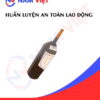
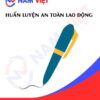



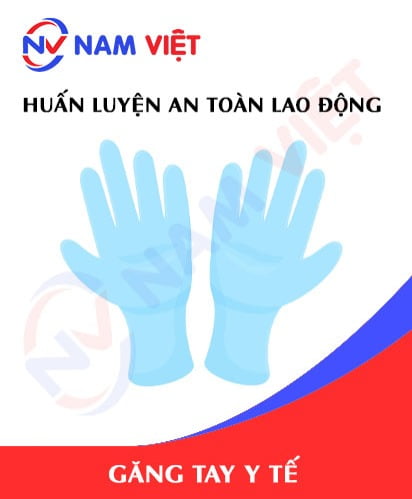


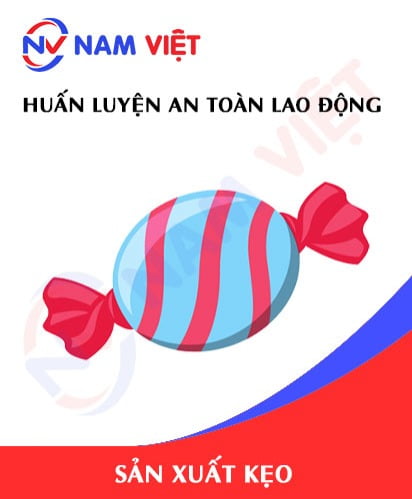


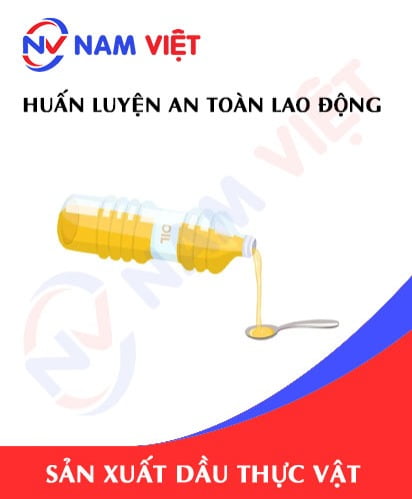

namchinh.haiphong341
Dịch vụ huấn luyện an toàn lao động rất tốt nhé, giảng viên dạy rất sinh động dễ hiểu!